Textiles Of Murshidabad
Bengal's textile production was immensely diverse with over 150 different qualities and variants of textiles covering muslins, calicoes and silk.
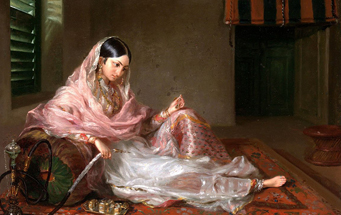
Photo credits: Google
Bengal/Dhaka Muslin
Mulmul Khas (king's muslin) was of the finest quality and proven to have been superior to the finest European fabrics. Abrawan (running water), the second quality muslin was the one which led Aurangzeb to chastise his daughter for being immodestly clad! Shabnum (evening dew) circar ali and tunzeb followed as the third, fourth and fifth qualities.
Dhaka Muslin was specifically renowned for its transparency, beauty and delicacy. So fine was the fabric that a pound of cotton would provide more than 250 miles of muslin thread. The finest of the fabric can be passed through a hole of a finger ring.
Dhaka Muslin was specifically renowned for its transparency, beauty and delicacy. So fine was the fabric that a pound of cotton would provide more than 250 miles of muslin thread. The finest of the fabric can be passed through a hole of a finger ring.
Baluchari Saris
Baluchari got its name from a small village called "Baluchari", which is situated in Murshidabad. Baluchari sarees come in somber colors with silk brocaded designs on the palla and the border. Baluchari saree is a fabric woven in a plain weave, but brocaded in unique designs with untwisted silk threads. The most popular colours used are red, blue, yellow, green and scarlet. The ground of these saris is usually designed with floral sprays or small booties or motifs, both large and small judiciously distributed over the entire field using supplementary weft threads.
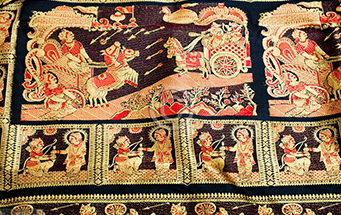
Photo credits: Google
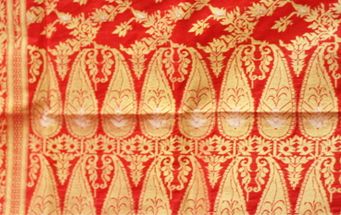
Photo credits: Google
Jamdani
Figured muslin with floral motifs woven in by brocading method, Jamdani is truly the queen of the delicate muslin of Dhaka. A light, translucent fabric, Jamdani is usually made in lengths of six yards. The main peculiarity of Jamdani work is its Persian origin and its geometric design. Present day Jamdani saris have on their ground designs of rose, Jasmine, lotus, bunches of bananas, bunches of ginger and sago. A Jamdani with small flowers diapered on the fabric is known as Butidar. If these flowers are arranged in reclined position, it is called Tersa Jamdani.
Tangail
They are gross simplifications of the famed Jamdani saris of Dhaka with counts ranging between 70-80 threads per sq.inch. The main body of the sari can be plain or striped (dure) or scattered with small motifs or booties all over (bootidar). The borders or pars are either plain (Pheta) or with naksha (ornamental) created through extra-weft. In these saris, the emphasis is on rich warm colours, both vibrant and muted. These saris are sometimes highlighted with lines of gold or silver thread, to add to their elegance
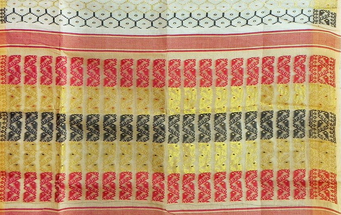
Photo credits: Google
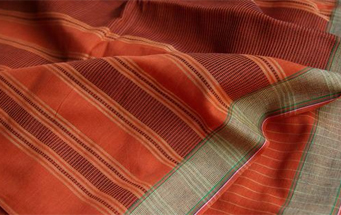
Photo credits: Google
Santipuri Saris
Santipur in the Nadia district is known for their fine texture saris having uniform weaves made from fine cotton yarns with counts ranging from 12s to 100s, used both in the warp and the weft directions. The ground of the sari may either be plain in a solid colour or frequently have fine and delicate checks and stripes. Sometimes the weavers also use extra-weft yarn of one or several colours and create a special sorted effect known as meenakaj or enamel work.
Garad saris
Saris woven from either mulberry or tussarsilk with white, undyed fields and plain borders in red colour are Garad saris. They are oven on a 3 shuttle loom
and are known as Puja saris. Sometimes this sari is also offered by the lady of the house to goddess Durga, in order to evoke her blessings
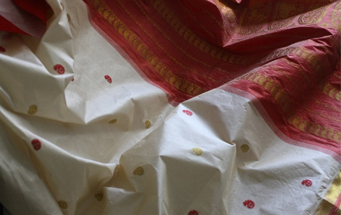
Photo credits: Google

